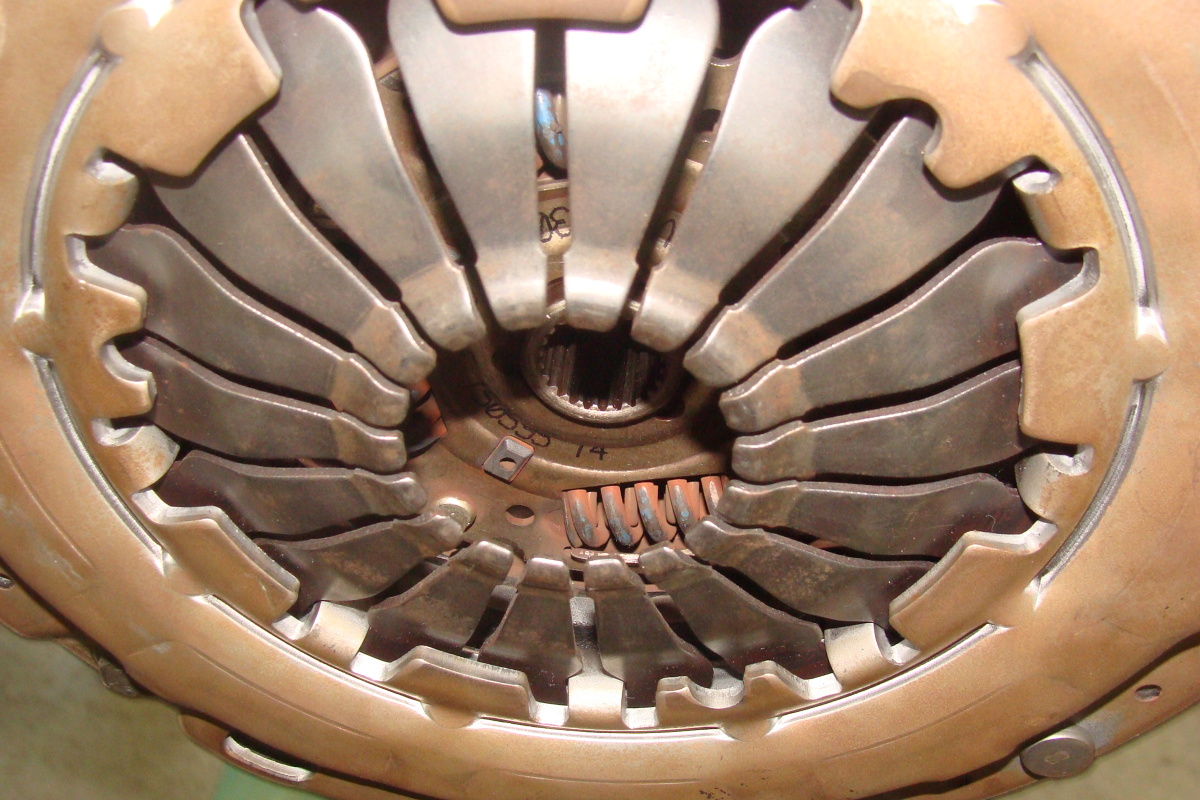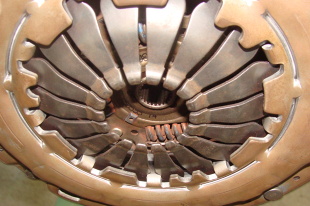
Noisy clutch
 Suspicious clutch sounds should be a concern, because very often they are accompanied by serious damage.
Suspicious clutch sounds should be a concern, because very often they are accompanied by serious damage.
Noise can cause broken hub splines. This usually occurs as a result of damage to the clutch shaft bearing or  angular displacement of the axes of the engine and gearbox. Excessive spline wear is also due to vibrations in the transmission. The characteristic sounds are caused by a damaged clutch release bearing, namely its front ring interacting with the belleville spring sheets or, in older solutions, with the tips of the rocker arms. As noted during diagnostics in the workshop, too high a resistance of the release bearing, incorrect clearance or excessive preload of the release bearing contribute to this.
angular displacement of the axes of the engine and gearbox. Excessive spline wear is also due to vibrations in the transmission. The characteristic sounds are caused by a damaged clutch release bearing, namely its front ring interacting with the belleville spring sheets or, in older solutions, with the tips of the rocker arms. As noted during diagnostics in the workshop, too high a resistance of the release bearing, incorrect clearance or excessive preload of the release bearing contribute to this.
Buzzing, rattling is most often caused by broken torsional vibration damper springs. The springs that have fallen out of the holders behave similarly. Such a spring can penetrate between the disc lining and the pressure ring surface and interfere with the operation of the clutch. Excessive play in the spring mount will also be audible.
A noisy clutch is also the result of a poorly fitted clutch disc or an unsuitable clutch disc or retaining ring. Unnecessary friction between the interacting elements can then occur and in extreme cases, for example, the destruction of the metal casing of the vibration damper.
Suspicious noises are also made by a worn out fork due to lack of or insufficient lubrication.